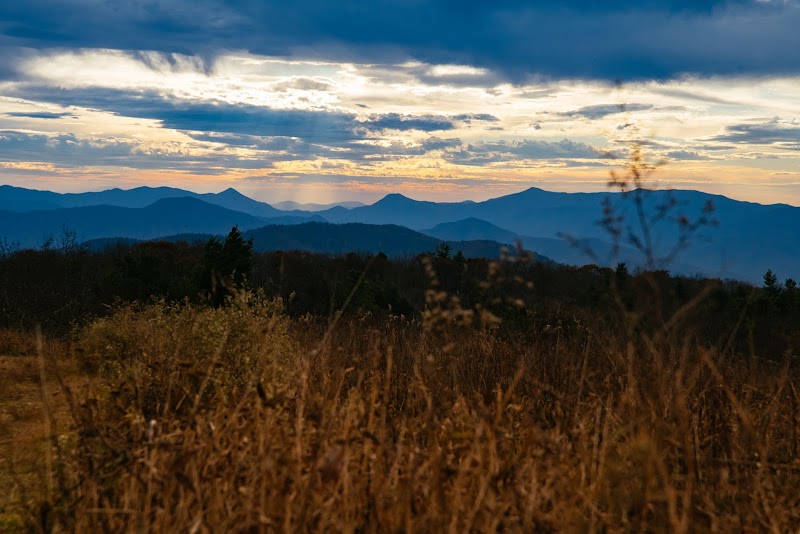Best Scenic Day Hikes Near Elizabethton: Exploring Rhododendron Fields and Ridge Views in Cherokee National Forest
Explore some of the best day hikes near Elizabethton through vibrant rhododendron fields and sweeping ridge views in Cherokee National Forest. This guide offers balanced insights, blending vivid trail descriptions with practical tips to help you plan and enjoy your adventure with confidence.
Start Early to Avoid Afternoon Crowds and Heat
Morning hikes provide cooler temperatures and a quieter trail experience, especially in summer months when heat builds quickly along the ridges.
Wear Sturdy Footwear with Good Grip
Trails include rocky and uneven surfaces; proper trail shoes or boots reduce slip risks and provide ankle support.
Pack Sufficient Water and Snacks
Water sources may be scarce or low-flow midday; bring at least 2 liters of water per person and energy-dense snacks to maintain strength.
Use Trail Maps or GPS for Navigation
Although marked, some junctions can be confusing; a map or GPS ensures you stay on course and aids in emergencies.
Best Scenic Day Hikes Near Elizabethton: Exploring Rhododendron Fields and Ridge Views in Cherokee National Forest
For those ready to trade city streets for forest trails, the area around Elizabethton offers a series of day hikes where rhododendron blooms and ridge views take center stage. Cherokee National Forest lays out rugged paths that invite careful exploration—paths where the dense green undergrowth whispers stories and the ridgelines stretch wide, daring you to trace them with your eyes and feet. These trails are practical choices for hikers seeking both immersion and manageable challenge.
Start your adventure with the Rhododendron Loop Trail, a moderate 5.6-mile circuit that climbs steadily through dense hardwoods and breaks open in early summer with wild rhododendron patches. The trail’s 900-foot elevation gain rewards with sweeping views of the Appalachian foothills, where the fluctuating breeze animates the leaves like a natural orchestra conductor.
For those who want an experience etched with ridge-top panoramas, the Unaka Ridge Trail offers just under 7 miles of trek. The terrain here demands steady footing across rocky stretches and roots that lace the trail, earning its "moderate" rating. As the sun climbs, the forest light shifts dynamically, spotlighting the vibrant rhododendron clusters that guard the path. Timing here matters: late spring and early summer bring these bushes to full bloom, coloring the ridges with vibrant hues.
Each step forward moves you through terrain fiercely itself: rocky outcrops, shaded valleys, and rhododendrons that crowd the path’s edges like keen spectators. These hikes aren’t only about vistas but active engagement—a chance to respect the forest’s rhythms and challenges. Stay alert for sudden drops along the ridges and plan to carry ample water; streams will entice but often run low by midday. Footwear with reliable grip is key, as the forest floor weaves loose rocks and slick leaves.
Arriving early or pacing your hike towards later afternoon grants a different kind of magic—a silence that presses in, broken only by distant calls from wood thrushes or the rustle of a squirrel on the prowl. Packing layers to adjust for temperature swings along the ridgeline, and a light first aid kit, ensures you meet the hike on equal footing.
Whether you are a casual walker or a dedicated adventurer, these Cherokee National Forest trails near Elizabethton offer a chance to connect with southern Appalachian nature in a clear, approachable way. Opportunity and challenge intertwine in every step, inviting you to engage fully—not to conquer, but to experience.
Nearby Trips
All Adventures
Boat Charters
Water Activities
Adventures near Elizabethton
Discover the unique and memorable adventures that make Elizabethton special.
Frequently Asked Questions
When is the best time to see rhododendron blooms along these trails?
The peak blooming period is typically late May through early June. During this window, rhododendron patches along the Rhododendron Loop Trail and Unaka Ridge Trail reach their most vivid display.
Are there any lesser-known viewpoints along these hikes?
Yes, midway through the Unaka Ridge Trail, a small side spur leads to a rocky outcrop offering panoramas of Watauga Lake, often overlooked by many hikers.
What wildlife might I encounter on these trails?
Expect to see white-tailed deer, eastern wild turkeys, and occasionally black bears. Birdwatchers should watch for wood thrushes and pileated woodpeckers that frequent this forest.
Is there any historical significance to Cherokee National Forest in this area?
Cherokee National Forest preserves lands once traversed by indigenous Cherokee people and early Appalachian settlers. Some trails follow old logging roads and paths used for centuries.
What environmental considerations should hikers keep in mind?
Stay on maintained trails to protect sensitive rhododendron and understory plants. Avoid picking flowers and pack out all trash to preserve the forest’s natural state.
Are dogs allowed on these trails, and are there any restrictions?
Dogs are allowed but must be kept on a leash to protect wildlife. Make sure to carry waste bags and respect other hikers and animals.
Recommended Gear
Trail Running Shoes or Hiking Boots
Provides grip on rocky, uneven terrain while supporting ankles for longer hikes.
Hydration System or Water Bottles
Necessary to stay hydrated, especially with limited reliable water sources on the trail.
Light Rain Jacket or Windbreaker
Protects against sudden showers or wind, particularly on exposed ridges.
Compact First Aid Kit
Essential for treating minor cuts, blisters, or insect bites encountered on the trail.
Local Insights
Hidden Gems
- "Rocky Cove Cliff viewpoint on the Unaka Ridge Trail"
- "Quiet creek crossings that host salamanders"
- "Seasonal wildflower meadows beyond the main rhododendron patches"
Wildlife
- "White-tailed deer"
- "Black bears (rarely seen)"
- "Wild turkeys"
- "Wood thrush"
- "Eastern box turtles"
History
"The Cherokee National Forest covers land infused with Native American history and early Appalachian settlement trails, preserving both natural and cultural legacies."
